With November coming to a close and the end of the year fast approaching, we are nearing the announcement of the 2017 Newbery / Caldecott Awards with every passing minute. This may be the perfect time to take a step back and think about those winners from years past. Some of them remain in our collective unconscious but a number of them have been unjustifiably forgotten. Today I am pleased to introduce a guest post from Fred Guida. He was kind enough to allow me the chance to feature his piece on one of the more prolific award winners of the past. Yet as the writer (not the illustrator) of numerous Caldecott Award winners, his is a too little lauded name.
Rediscovering Alvin Tresselt
by Fred Guida
As is the case in all branches of literature, good books, and even some great ones, go out of print all the time. And some authors, both good and great, have a way of receding into the background; not exactly forgotten, but no longer as prominent as they once were or deserve to be. In the context of children’s literature, the work of Alvin Tresselt is a glaring case in point, and, as such, his books cry out for rediscovery.
 Over the course of a career that spanned six decades, he wrote and/or adapted fifty-four books, primarily picture books, for children. Many won awards and high praise. His White Snow, Bright Snow (1947) is a Caldecott Medal winner, and Rain Drop Splash (1946) and Hide and Seek Fog (1965) are Caldecott Honor books. Numerous titles were translated into a wide range of foreign languages, and several were developed into audiovisual productions.
Over the course of a career that spanned six decades, he wrote and/or adapted fifty-four books, primarily picture books, for children. Many won awards and high praise. His White Snow, Bright Snow (1947) is a Caldecott Medal winner, and Rain Drop Splash (1946) and Hide and Seek Fog (1965) are Caldecott Honor books. Numerous titles were translated into a wide range of foreign languages, and several were developed into audiovisual productions.
It is also interesting to note that over the course of his prolific career he usually held down a “day job” related to children’s literature. He was the first managing editor of Humpty Dumpty’s Magazine, and eventually became vice president of Parents’ Magazine Press and editor-in-chief of its children’s publications. He also worked as an instructor, and ultimately Dean of Faculty, at the Institute of Children’s Literature.
Tresselt was born in 1916, in Passaic, New Jersey and, as a child, spent a short time on a farm, an experience that may well have planted a seed that eventually blossomed in his writing about nature for children. He later moved to New York City and worked in several design firms and department stores, including B. Altman & Co., where he was involved in display and copywriting. In 1949 he married artist and educator Blossom Budney, herself the author of several books for children. After living for many years in Connecticut, he retired to Vermont where he died in 2000.
His writing career began in the mid-1940s under the mentorship of the legendary Margaret Wise Brown, and under the influence of New York’s progressive Bureau of Educational Experiments, the forerunner of today’s Bank Street College of Education, which staunchly advocated for creative realism in children’s literature. He was also influenced by Brown’s close friend, illustrator Leonard Weisgard. He was in heady company and was, in a very real sense, a witness to the early years of the modern era of American picture book publishing. He was, in fact, part of it.
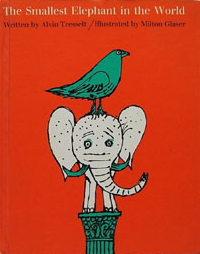 So what kind of books did Alvin Tresselt write? To begin with, there are a few interesting one-shots like The World in the Candy Egg (1967), a rare excursion into fantasy, and the delightfully cartoon-like The Smallest Elephant in the World (1959). However, the majority of his work can be divided into two main groups of roughly equal size.
So what kind of books did Alvin Tresselt write? To begin with, there are a few interesting one-shots like The World in the Candy Egg (1967), a rare excursion into fantasy, and the delightfully cartoon-like The Smallest Elephant in the World (1959). However, the majority of his work can be divided into two main groups of roughly equal size.
The first group is comprised of picture books that explain and celebrate various aspects of the world in which children live. In this context, he is often a “nature specialist,” ultimately a realist, and a pioneer in that genre alternately known as creative, narrative, or literary nonfiction. These are books that are heavily influenced by Bank Street’s famous here-and-now philosophy – i.e., books that are rooted in the real world, as opposed to the more traditional children’s world of fairy tales and fantasy.
And within this group, there is an overlapping subgroup of what might be termed philosophical forays into the heart of childhood. Timothy Robbins Climbs the Mountain (1960), The Wind and Peter (1948), What Did You Leave Behind? (1978), and How Far is Far? (1964) are such books. And I Saw the Sea Come In (1954), a book that is ostensibly about a day at the beach, celebrates the fact that all a child really needs to find enjoyment is a sense of wonder and an imagination.
One can also add another subgroup in which, primarily at the end of his career, he returned to six of his earlier books and released them with revised text and new illustrations. His goal was to freshen each title and make it more accessible and relevant to a new generation of readers. For example, in Wake Up, City! (1990), an admittedly dated cop on the beat is replaced by a pair of modern police officers, one of whom is an African-American woman.
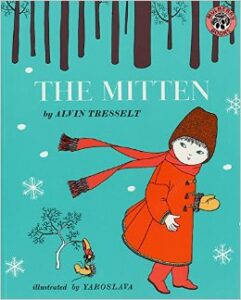 The second main group is comprised of his adaptations, primarily of stories and folk tales, most of which were published by Parents’ Magazine Press. A few, like Stories from the Bible (1971), originated in English. However, most were originally published in book form outside the United States: Germany, Ukraine, and Switzerland, but primarily Japan. Working with copy that had been translated into English, he adapted them for American children. And while they do not necessarily employ the kind of poetic prose found in his original books, they are nevertheless rich in atmosphere – and they tell wonderful tales, and tell them well. The most famous and successful of these books is his 1964 version of The Mitten, the first American picture book edition of this perennially popular tale.
The second main group is comprised of his adaptations, primarily of stories and folk tales, most of which were published by Parents’ Magazine Press. A few, like Stories from the Bible (1971), originated in English. However, most were originally published in book form outside the United States: Germany, Ukraine, and Switzerland, but primarily Japan. Working with copy that had been translated into English, he adapted them for American children. And while they do not necessarily employ the kind of poetic prose found in his original books, they are nevertheless rich in atmosphere – and they tell wonderful tales, and tell them well. The most famous and successful of these books is his 1964 version of The Mitten, the first American picture book edition of this perennially popular tale.
It is largely on the here-and-now picture books that Tresselt’s reputation rests. In short, they are noted for their gently poetic and lyrical prose, their rich atmosphere, emotion, and evocation of mood, and the almost subliminal manner in which they convey information – including factual information. As the biographical blurb in the revised edition of Wake Up, City! notes, “his books have awakened thousands of readers and listeners to the many small miracles of life.” And, to put a finer point on it, consider the promotional dust jacket blurb in the original edition of Sun Up (1949) which states that “children will linger over the pages and return to this book again and again – for it has transformed an incident of everyday life into a pastoral poem.” The same basic sentiment applies to many titles, whether rural or urban in setting.
Consider the very first words of his first book, Rain Drop Splash, written in 1946, which initiated a fruitful, nearly fifty-year publishing relationship with Lothrop, Lee & Shepard. These words clearly indicate an author who is acutely attuned to the sounds and rhythms of language:
 Drip drop splash,
Drip drop splash,
drip drop splash,
drip drop splash
went the rain all day.
(The book also reveals an author who is in touch with the rhythm and pulse of nature as it follows the progress of rain drops from puddle to pond to brook to lake to river and finally to the open sea. And along the way we are shown the effects of the water on all the living things that are touched by it.)
Indeed, his is a world rich in aural imagery, a world in which chipmunks chatter, snowflakes whisper quietly, the laughter of children sparkles, catbirds scold, and hay balers go gunka ka CHUNG, gunka ka CHUNG, gunka ka CHUNG.
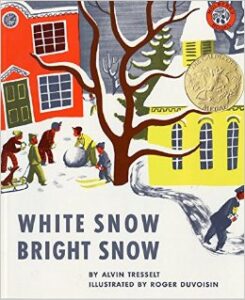 And it is a world equally rich in visual imagery. For example, there is White Snow, Bright Snow, the first of eighteen highly successful collaborations with illustrator Roger Duvoisin. In it we enter a world in which automobiles “looked like big fat raisins buried in snowdrifts,” and in which houses “crouched together, their windows peeking out from under great white eyebrows.”
And it is a world equally rich in visual imagery. For example, there is White Snow, Bright Snow, the first of eighteen highly successful collaborations with illustrator Roger Duvoisin. In it we enter a world in which automobiles “looked like big fat raisins buried in snowdrifts,” and in which houses “crouched together, their windows peeking out from under great white eyebrows.”
And as an indication of his genius for synthesizing aural and visual imagery into pure poetry, consider the closing words of Johnny Maple-Leaf (1948), a stunningly beautiful book that depicts the cycle of the seasons as told from the perspective of a maple leaf:
The bare branches whistled as the wind blew harder. He was cold and lonely. Where were the birds and the rabbits, the flowers and leaves that had lived with him all summer? Still the wind blew, and Johnny let go, sailing down, down, down …
The other leaves seemed to make room for him, and he wiggled his way in. Here it was warm and he wasn’t lonely. Gentle little snow flakes fell softly over him, and Johnny Maple-Leaf decided this was the best place in the whole world for him to be, and he went off to sleep.
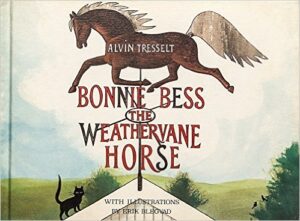 And as a not insignificant aside, it is interesting to note that several of his books contain an undercurrent of poignant meditation on the passage of time, and in so doing exhibit a wistful quality that cannot escape the attention of any reasonably sensitive adult. This is particularly true of Johnny Maple-Leaf, and also of Bonnie Bess the Weathervane Horse (1949).
And as a not insignificant aside, it is interesting to note that several of his books contain an undercurrent of poignant meditation on the passage of time, and in so doing exhibit a wistful quality that cannot escape the attention of any reasonably sensitive adult. This is particularly true of Johnny Maple-Leaf, and also of Bonnie Bess the Weathervane Horse (1949).
Alvin Tresselt was effectively a pioneer of poetic, lyrical, evocative, mood-rich prose for children. (His style has in fact been described as what might be termed “mood writing.”) Nevertheless, when one looks at the past sixty years or so of American picture book publishing, he has certainly had his share of competitors and imitators. However, one thing is certain: he perfected this style and took it further than anyone else. Simply put, and notwithstanding a debt in this area to Margaret Wise Brown, no one has ever done it better.
And as for the content, the “meat,” of his books, it has been observed that many appear to be simply a series of plotless and characterless vignettes or impressions that may be peppered with factual information. On the surface, there is a grain of truth here – and yet only up to a point. The real truth is that they are rich in atmosphere and emotion. And there is always underlying action, always a subtle story, always something to learn, always movement toward some quiet destination.
In a sense, many of his books are indeed abstractions – and yet they are, once again, always rooted in reality. And they do not simply parrot Bank Street dogma; they are original. Their language is simple yet not simplistic, and there is always a highly individual voice that speaks clearly and directly to readers and listeners of all ages. Even in books about rabbits and robins, they are never cloying or cute. They are honest. Never didactic or preachy. And while they do frequently educate and inform, they do not teach in the conventional sense of the word.
All of this suggests a very interesting body of work. However, the sad fact is that all but four of his books are out of print.* This is particularly disturbing in light of the fact that, as a practical matter, many of them can be broadly grouped under the umbrella of nonfiction. In this regard, as a way of addressing the current call for more nonfiction in schools and libraries, particularly within the context of the Common Core State Standards, it has been suggested that schools and libraries adopt more creative or narrative nonfiction. As such, is there not room for books that can, once again, introduce young children to the cycles of water and the seasons? Or to the realities of life in the country or in a big city? Or to how a rabbit lives? Or to the power of the wind? Or to the effects of a heavy fog. Or to the impact of beavers and decaying trees on ecosystems? And it must be noted once again that this dissemination of information is always handled in a very subtle, non-didactic manner. (It is also worth mentioning here that some of these titles may be relevant within the context of the life sciences component of the STEM initiative which stresses education in the areas of science, technology, engineering, and math.)
And what about his retelling of those foreign stories and folk tales? To put the matter bluntly, multiculturalism is an important part of the discussion concerning today’s children’s literature. Yet, with the obvious exception of The Mitten, these books are essentially forgotten.
So where do we go from here? Thankfully, most libraries usually have a few well-worn copies of various titles; occasionally, a particular library will have more. And while one can always turn gratefully to the treasures that are available through the interlibrary loan system, many titles are extremely difficult (if not impossible) to find in any given geographic area.
It is a most unfortunate situation. In response – and notwithstanding the realities and vicissitudes of the business of publishing books – one can only cry out that surely there must be a market for the work of an author with an almost fifty-year track record of success.
The process of bringing an out-of-print book back to life can be very difficult. The Lothrop, Lee & Shepard titles have made their way to Harper Collins. And Scholastic acquired Parents’ Magazine Press some time ago; this backlist includes some excellent originals as well as the foreign adaptations. Hopefully, some of these books will one day be given a chance to speak to a new generation. There’s not a bad book among them, and many are simply brilliant.
And so, toward this end, how about it lovers of great children’s literature? (A group which, of course, includes librarians, teachers, parents, and booksellers.) How about making a little noise? Can’t we all use a little more poetry in our lives? And, more importantly, don’t our children deserve it?
Fred Guida is a retired film studies instructor, and the author of A Christmas Carol and Its Adaptations: Dickens’s Story on Screen and Television. He also moonlighted for six years in the children’s department of his local Barnes & Noble.
*As of this writing, four Alvin Tresselt books are in print: White Snow, Bright Snow (1947); The Mitten (1964); Hide and Seek Fog (1965); and The Gift of the Tree (1992). The latter is a revised edition of The Dead Tree (1972).
Thank you, Fred, for this great piece. And thank you to the readers out there, that wanted to know more.



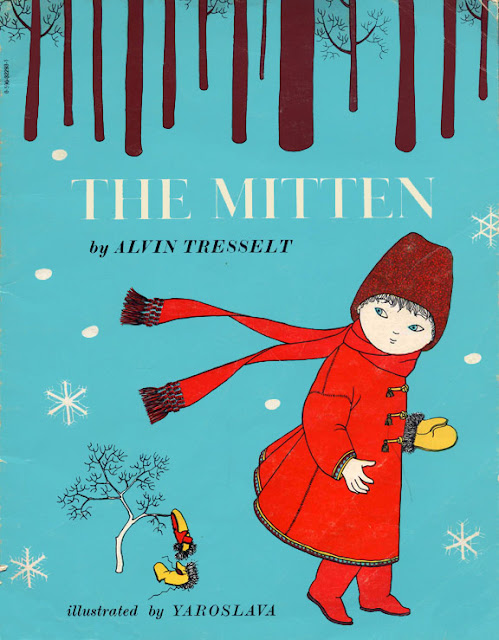


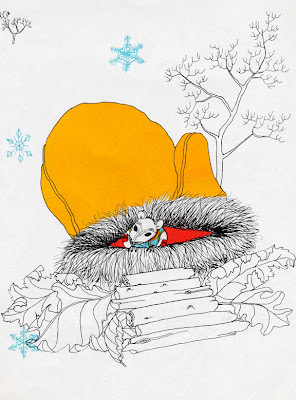
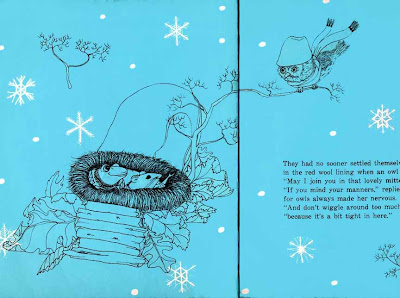

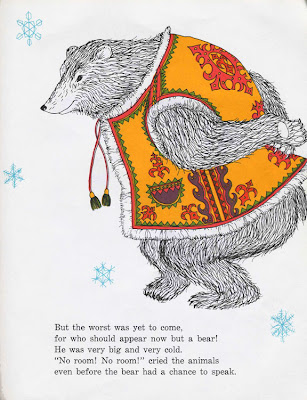




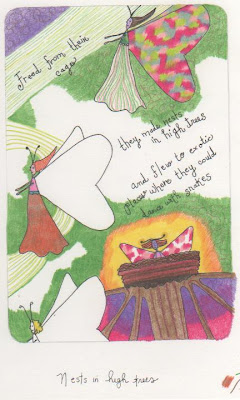

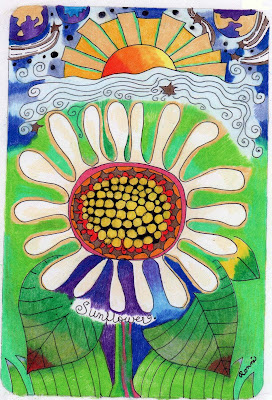

Though Jan Brett's version of the story is more popular, I always check this one out, too.